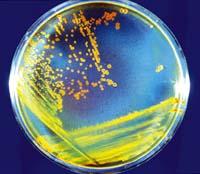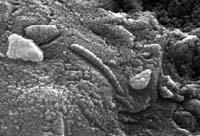Nanobacterias, yes?

Nanobacterias have once again questioned life in an article in the journal PNAS. J. Martel and J. In the study by Young, particles such as nanobacterias have been produced by mixing human serum and calcium carbonate. These results have resembled the alleged nanobacterias raised spontaneously in the human serum and have seen that they are identical, but have not found a trace of DNA or RNA. Then, there has been enough radiation to kill any living being and the particles generated have suffered no change.
Both researchers consider that these structures are due to the chemical reaction between calcium and carbon dioxide. Both are common in the blood and, being a complex organic and mineral molecule, it would be normal to stick proteins and other organic molecules into the skin. Therefore, they cannot grow with regular forms, such as crystals, or adopt forms such as bacteria.
The first citations of nanobacterias date back to the 1980s and the word nanobacacterio began to be used around 1990. They are living beings of between 200 and 300 nanometers, below the minimum limit allowed for life possible. In several trials, structures that would be nanobacterias have emerged. In humans, they have been associated with various diseases related to calcification, as well as with numerous processes of calcification in nature. It is also said that in meteorite ALH84001 there is a possible fossil nanobacteria. A company has already marketed a nanobacterial detection kit in medical research.

They have always been associated with calcification processes and it has been commented that they reproduce every five days, but it has never been possible to isolate traces of DNA or RNA. It was stated that they obtained it in an article, but it was confirmed that it was the typical contamination of the PCR technique. Currently, researchers at the Mayo clinic are trying to isolate DNA or RNA from nanobacterias.





